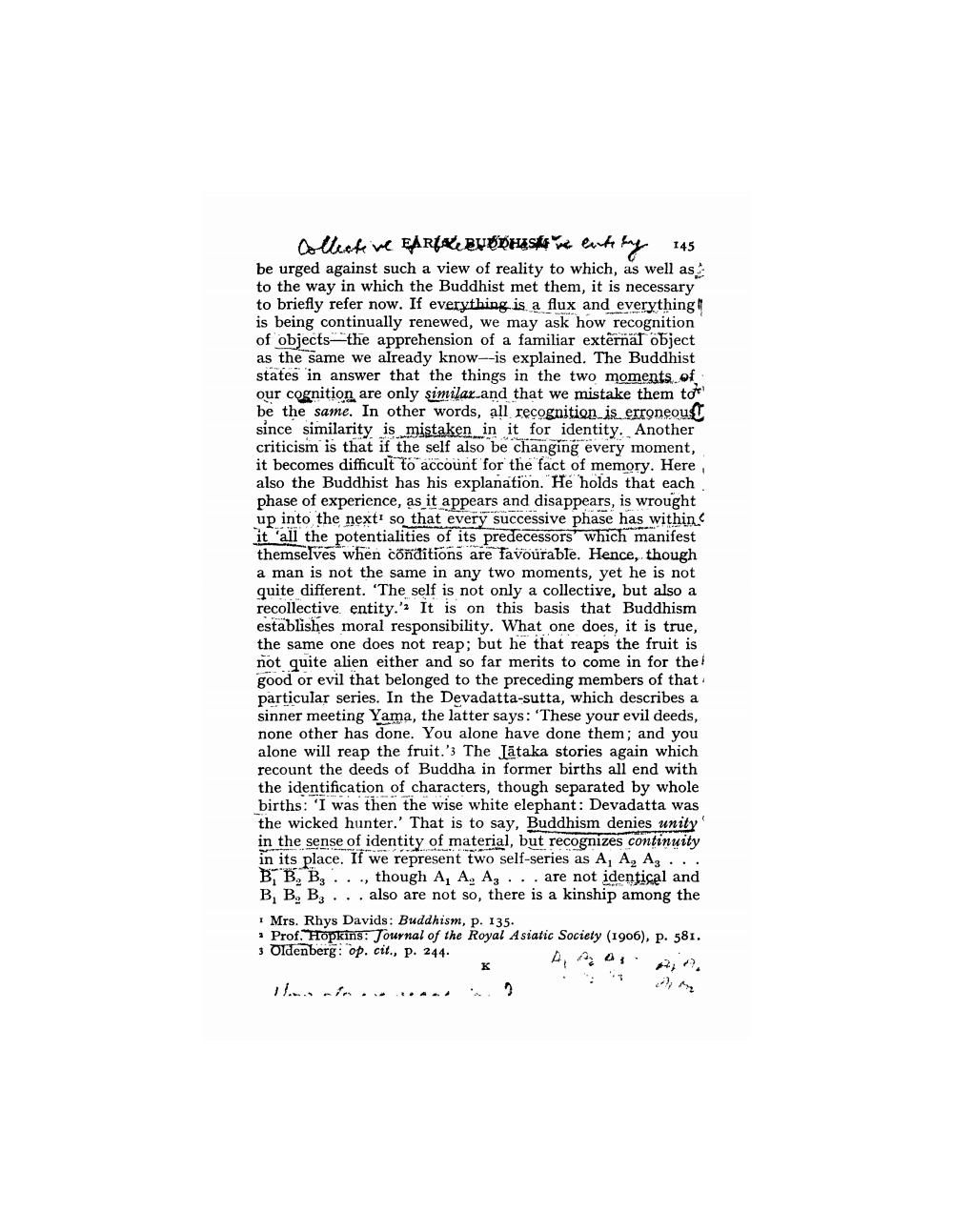________________
Atleek ve EARL BODHESH ventolong 145 be urged against such a view of reality to which, as well as to the way in which the Buddhist met them, it is necessary to briefly refer now. If everything is a flux and everything is being continually renewed, we may ask how recognition of objects—the apprehension of a familiar external object as the same we already know-is explained. The Buddhist states in answer that the things in the two moments of our cognition are only similar and that we mistake them to be the same. In other words, all recognition is erroneous since similarity is mistaken in it for identity. Another criticism is that if the self also be changing every moment, it becomes difficult to account for the fact of memory. Here, also the Buddhist has his explanation. He holds that each phase of experience, as it appears and disappears, is wrought up into the next so that every successive phase has within. it 'all the potentialities of its predecessors' which manifest themselves when conditions are favourable. Hence, though a man is not the same in any two moments, yet he is not quite different. 'The self is not only a collective, but also a recollective, entity.'? It is on this basis that Buddhism establishes moral responsibility. What one does, it is true, the same one does not reap; but he that reaps the fruit is not quite alien either and so far merits to come in for the good or evil that belonged to the preceding members of that. particular series. In the Devadatta-sutta, which describes a sinner meeting Yama, the latter says: 'These your evil deeds, none other has done. You alone have done them; and you alone will reap the fruit.'3 The lataka stories again which recount the deeds of Buddha in former births all end with the identification of characters, though separated by whole births: 'I was then the wise white elephant: Devadatta was the wicked hunter.' That is to say, Buddhism denies unity in the sense of identity of material, but recognizes continuity in its place. If we represent two self-series as A, A, Ag .. B, B, B, ..., though A, A, A, ... are not identical and B, B, B, ... also are not so, there is a kinship among the
Mrs. Rhys Davids: Buddhism, p. 135. · Prof. Hópkins: Journal of the Royal Asiatic Society (1906), p. 581. 3 Oldenberg: op. cit., p. 244.
A A A




